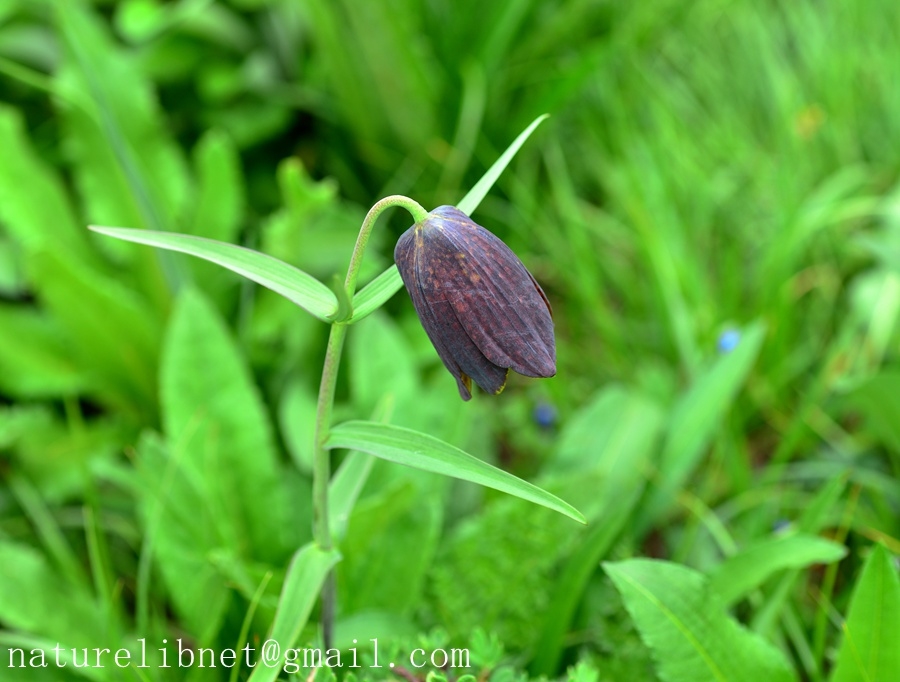- Scientific Name: Fritillaria cirrhosa D. Don
- Ref: Prodr. Fl. Nepal. 51. 1825.
- Synonyms: Fritillaria cirrhosa var. bonatii (H. Léveillé) S. C. Chen; F. cirrhosa var. dingriensis Y. K. Yang & J. Z. Zhang; F. cirrhosa var. viridiflava S. C. Chen; F. duilongdeqingensis Y. K. Yang & Gesan; F. lhiinzeensis Y. K. Yang et al.; F. zhufenensis Y. K. Yang & J. Z. Zhang; Lilium bonatii H. Léveillé.
- Chinese Common Name: 川贝母 Chuān bèimǔ
- Japanese Common Name: シセンノバイモ [四川の貝母] shisennobaimo
- Family: Liliaceae A. L. Jussieu
- Genus: Fritillaria
- Distribution: Forests, alpine thickets, meadows, flood lands, moist places; 3200–4600 m. Gansu, Qinghai, Sichuan, Xizang, Yunnan [Bhutan, India, Nepal, Sikkim].
- Photo: 07/07/2013, Mt.Balang, Sichuan
Bulb of 2 scales, 1--2 cm in diam. Stem 15--60 cm. Leaves 7--11, opposite or sometimes also 3- or 4-whorled and alternate; leaf blade linear to linear-lanceolate, 4--12 cm × 3--5(--15) mm, apex often curved or cirrose. Inflorescence 1(--3)-flowered; bracts 3, apex curved or cirrose. Flower nodding, campanulate or narrowly so; pedicel much shorter than tepals. Tepals yellow or yellowish green, slightly or heavily spotted or tessellated with purple, usually oblong-elliptic, 3--5 × 1.2--1.8 cm; nectaries elliptic to ovate, 3--5 × 2--3 mm, projecting abaxially. Stamens 2--3 cm; filaments sometimes slightly papillose. Style 3-lobed; lobes 3--5 mm. Capsule narrowly winged; wings 1--1.5 mm wide. Fl. May--Jul, fr. Aug--Oct. 2 n = 24*.(Flora of China)
